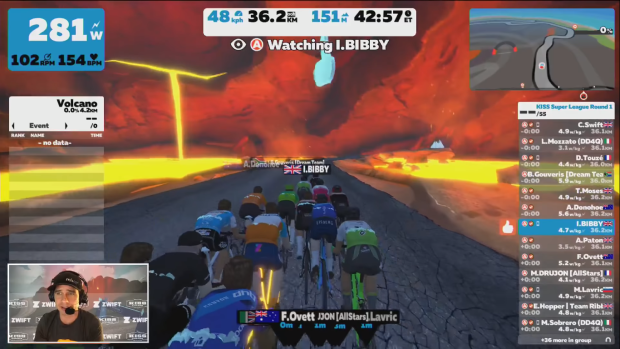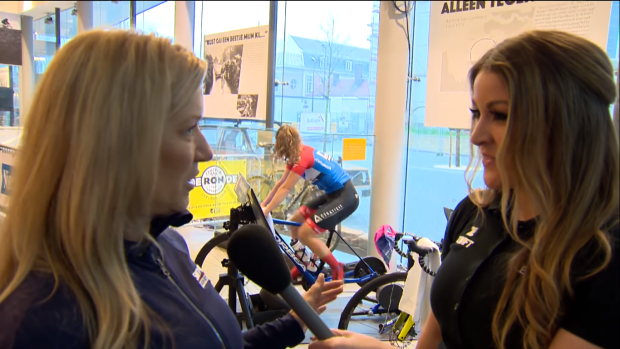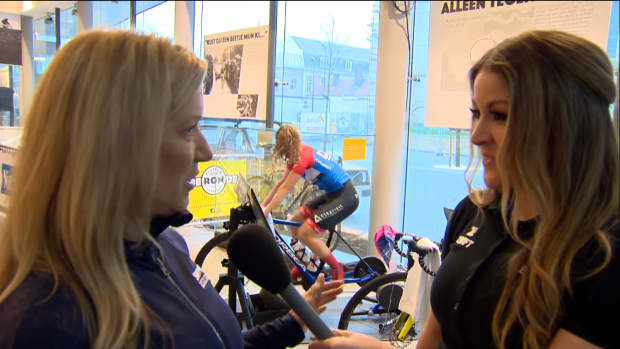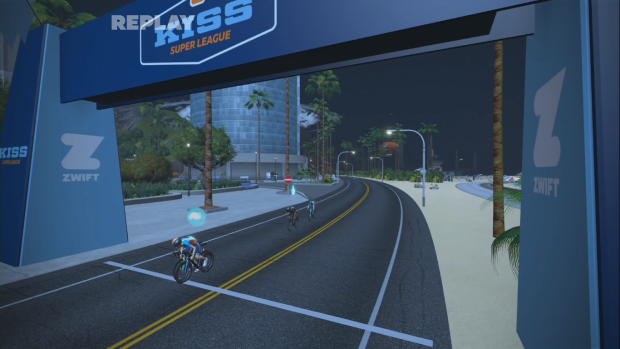KISS Super League: Dawn of a New Era?

Racing is the heart of the Slowtwitch community. To compete is human nature. The ultimate test of a person’s mettle or a device’s function has been to step into an arena and pit ourselves against one another to declare a winner. From the gladiators of the Roman Empire to the Olympics to World Cup Soccer to marathons, we’ve found myriad ways to test ourselves against one another, as individuals and as teams. Sport is a major form of entertainment, and superstars are borne of competition.
Racing is a logical extension of that basic desire to compete. Many of us participate in racing of some sort, whether we toe the line ourselves or enjoy watching professionals compete at a high level. Chariot racing, the Tour de France, the Indianapolis 500, and the Ironman World Championship are just a few examples of how we have combined man, machine, and sometimes beast to test not only ourselves, but our equipment. As the old auto racing adage goes, “win on Sunday, sell on Monday.” In the early-20th century, auto manufacturers saw potential in racing because a winning car meant a perception of quality and, subsequently, an increase in sales. Trek’s rise in popularity and perceived quality grew dramatically globally when a young American won multiple Tours de France on their Wisconsin-bred bicycle.
The Rise of eSports
Fast forward to the Internet Age where technology has enabled a new breed of sport to develop: eSports. eSports blend video game culture with traditional sport to enable competition in the virtual digital realm. Gamers compete with one another in person or remotely, and major gaming events such as the League of Legends World Championship draw in professional competition from around the globe. eSports has grown into a billion dollar industry.
At the same time, Indoor cycling has been evolving rapidly. Trainer and other hardware manufacturers have improved the quality and experience of indoor cycling with better, more accurate smart trainers, power meters, and sensors. Software providers, such as Zwift, have improved their software and provided the infrasructure required to support competitive events. Standardized open protocols such as ANT+ and Bluetooth have allowed hardware and software training tools to communicate. And, of course, more consumers are training and participating in indoor cycling. Essentially, we had reached a point where all the pieces – hardware, software, communications, and people – were in place to allow for professional eCycling to happen.
The folks at Zwift recognized this opportunity. In December 2018, Zwift announced they had raised $120 million in funding, part of which was to be targeted towards expanding the Zwift eSports platform. Subsequently, the KISS Super League was formed, adding a professional level to the already popular amateur KISS racing league that had already been organizing amateur races on the Zwift platform. The inaugural season started in January, with 10 weekly men’s races. 16 teams were slated to participate, including Pro Continental teams such as Cofidis and Novo Nordisk, UCI Continental teams such as Hincapie Racing, Team Dimension, and Team Wiggins le Col. In an interesting twist, two teams – the Zwift Academy Dream Team and Zwift All-Stars – were included. These community teams are made up of riders who have proven themselves as solid competitors on the Zwift platform, but were not signed to any kind of pro team.

The men’s league was complemented by a women’s series, which would start a few weeks later, span a total of 8 races, and involve 9 teams, including the two Zwift community teams.

Of course, if any sport wants to gain popularity, it needs fans. Zwift assembled a broadcast team and leveraged Facebook, Twitch, YouTube, and other social media to allow for fans to watch races live or after the fact. Some of the teams hosted events where their riders were racing in front of an audience, and the KISS Super League broadcast team would be there to interview riders, team personnel and provide additional insight.
How did the first season go?
You can see the results of the entire season here. Those of us who tuned in to watch got to see some entertaining and close races, with many races wrapping up with 10 or more riders finishing within seconds of the race winner. Racing was hard and intense, with big wattage right out of the gate. Smart riders knew how to leverage the starts and apply a mixture of traditional and game strategy to put themselves in the position to win. Perhaps one of the more surprising elements was the rise of the community teams: the Zwift All-Stars and Zwift Academy Dream teams both finished in the top 3 in the men’s and women’s leagues, with the Zwift All Stars taking the top step of the women’s podium. Of 18 races, 7 races were won by a member of a community team.
Regarding the first season, James LaLonde, the Director of Growth Marketing – Cycling at Zwift, had the following thoughts:
“It’s been an incredible experience working for a brand that’s truly innovative and in a position to contribute to the growth of cycling in such a positive way. As eSports for cycling is still in its infancy it’s been interesting to hear and see how pro riders have approached the style of racing that Zwift offers – from team strategy and course recon missions to the use of power ups. Pros who had more race experience on Zwift had a clear advantage during the early rounds of the KISS Super League (KSL). They know the courses and have a better understanding of how and when to use power ups in comparison to riders who have less experience riding and racing on Zwift. One thing I have to continuously remind myself when watching the live streams is that there are dozens of athletes powering the avatars on screen from remote corners of the world. It’s convenient for pros to be able to participate without having to drive across a state or country or get on an airplane. At the same time, riders are continuously commenting about the intense nature of virtual races and have credited Zwift for improving their fitness when racing outdoors."
As Mr. LaLonde suggests, indoor racing opens some new doors, albeit virtually. Talented riders who may not otherwise be noticed are getting traditional racing opportunities with teams who see eSports as a means to recruit talent. On the other side of the coin, pros who normally race outdoors are using indoor racing to extend their race season and improve their outdoor fitness and race craft without the costs of travel. Indoor racing also puts pressure on the software and hardware providers to continue to improve the accuracy and reliability of their products. In races that were won by tenths of a second, well within the margin of error of today’s most accurate power meters, fair competition requires a higher standard of measurement. The benefits come back to the rest of us, as consumers, in the form of continual product improvement and a better indoor experience, whether we participate in indoor racing or not.

So what’s next for professional indoor cycling?
Where do we go from here? LaLonde shared the following thoughts via e-mail: “We’ve always communicated that KISS Super League is a demonstration series. It’s been a way for us to gauge interest, evaluate potential, and use the project as a general proof of concept. It is by no means our fully-fledged eRacing proposition, but it has provided an opportunity to learn and continuously improve.” He continued, “Season one was launched as sort of a test event for Zwift esports with a view to launching our full offering in 2020. We were able to test different formats and improve our approach to broadcasting. For our next season you can expect further changes in format and an improvement to broadcast and streaming.”
Indoor training and racing is evolving rapidly, thanks in part to Zwift and others who see the potential in this venture. It’s unlikely indoor racing is going to replace traditional competition any time soon, but by providing another option for those who do race outdoors or for those who haven’t otherwise considered themselves an athlete, the future looks bright for this relatively new, yet complementary, concept for pros, amateurs, and fans of competitive cycling.

